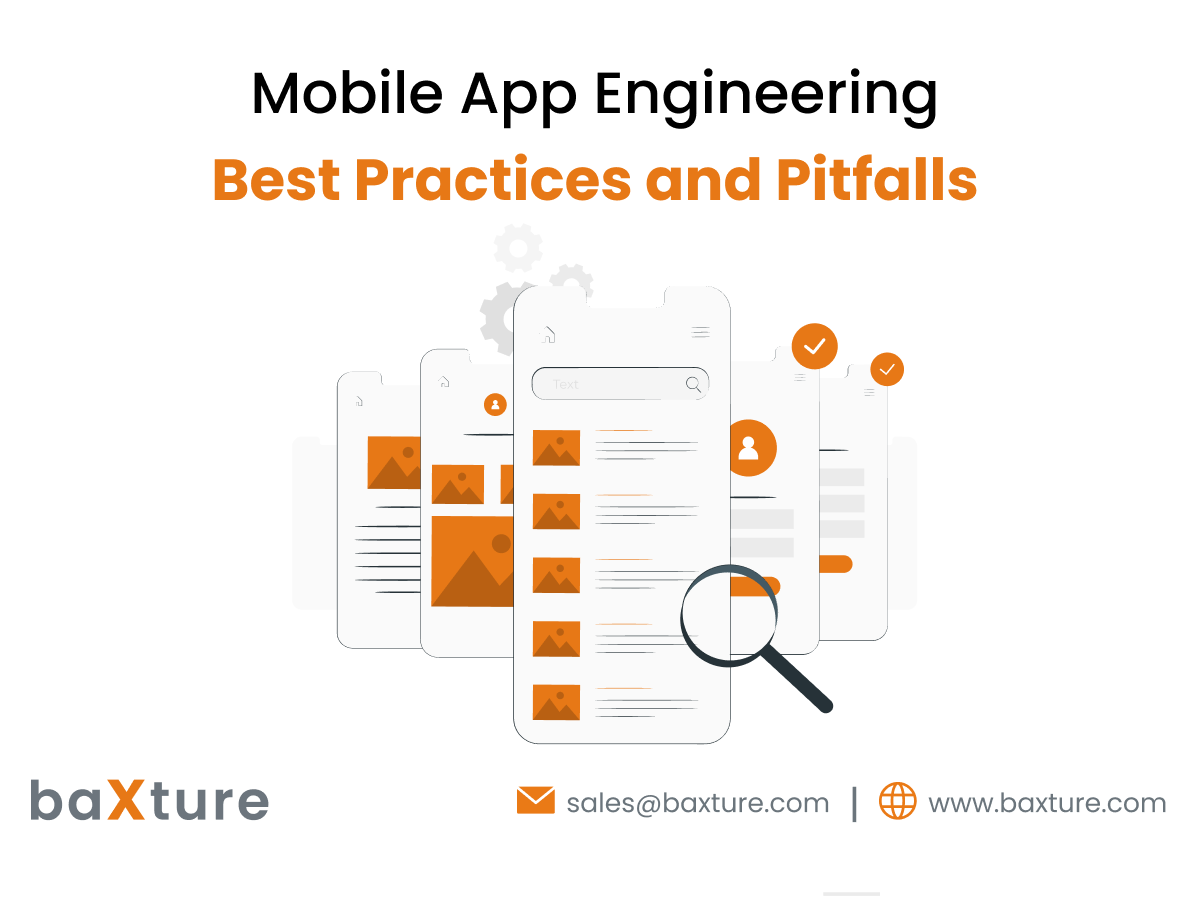Blogs
Mobile App Engineering: Best Practices and Pitfalls

Mobile application development has become increasingly crucial in today's digital landscape. With the growing demand for mobile apps, it is essential to focus on product engineering to ensure the success and user satisfaction of these applications. This article provides an outline of the best practices to follow and pitfalls to avoid in product engineering for mobile applications.
Best Practices for Product Engineering in Mobile Applications
User-Centered Design
Creating a mobile app that meets the needs and expectations of users is paramount. By incorporating user-centered design principles, developers can enhance the user experience and increase app adoption. Key practices include:
- Conducting user research and gathering requirements: Understanding the target audience, their preferences, and pain points helps in designing relevant and valuable features.
- Creating user personas and user journey maps: Developing personas and mapping out user journeys enables the design of intuitive and tailored interfaces that align with user expectations.
- Designing intuitive and user-friendly interfaces: Employing intuitive navigation, consistent design elements, and clear feedback mechanisms enhances usability and overall user satisfaction.
Agile Development Methodology
Adopting an agile development methodology facilitates the iterative and collaborative development of mobile applications. Key practices include:
- Implementing iterative development cycles: Breaking down the development process into smaller iterations allows for continuous improvement, adaptation, and faster time-to-market.
- Emphasizing frequent communication and collaboration: Regular communication between team members, stakeholders, and users fosters transparency, feedback incorporation, and alignment with project goals.
- Continuous integration and delivery: Automating the build, testing, and deployment processes streamlines development, ensures stability, and enables quick feature delivery.
Performance Optimization
Optimizing the performance of a mobile application is vital for user satisfaction and retention. Key practices include:
- Efficient use of device resources: Optimizing code, minimizing memory usage, and reducing unnecessary network requests improve app responsiveness and resource consumption.
- Optimizing app loading times and response rates: Implementing techniques such as caching, lazy loading, and asynchronous operations enhances app performance, especially in resource-constrained environments.
- Reducing battery consumption: Minimizing power-intensive operations, implementing power-saving strategies, and optimizing network usage contribute to longer battery life for mobile users.
Testing and Quality Assurance
Comprehensive testing and quality assurance processes are essential to ensure the stability, functionality, and reliability of mobile applications. Key practices include:
- Comprehensive testing across multiple devices and platforms: Conducting compatibility testing on various devices, operating systems, and screen sizes guarantees a consistent user experience.
- Automated testing for efficiency and reliability: Implementing automated testing frameworks and tools helps identify bugs, ensure code integrity, and improve overall testing efficiency.
- Bug tracking and resolution: Establishing a robust bug tracking system and promptly addressing reported issues through regular updates and patches ensures a smooth user experience.
Security and Privacy
Mobile applications often handle sensitive user data, making security and privacy crucial considerations. Key practices include:
- Implementing robust authentication and authorization mechanisms: Utilizing secure authentication methods, password hashing, and granular access controls protect user accounts and data.
- Protecting user data with encryption and secure storage: Encrypting sensitive data both in transit and at rest, and securely storing user information helps prevent data breaches and unauthorized access.
- Regular security audits and updates: Conducting routine security audits, staying informed about security vulnerabilities, and promptly applying security updates protect the app and its users from potential threats.
Pitfalls to Avoid in Product Engineering for Mobile Applications
Poor Performance and Responsiveness
- Overloading the app with unnecessary features: Adding excessive features without considering their impact on performance can lead to slow app loading times and reduced responsiveness.
- Ignoring performance optimization techniques: Neglecting performance optimization practices can result in sluggish app performance, frustrating users and hindering adoption.
- Failing to consider varying network conditions: Failing to account for fluctuating network conditions can lead to poor app performance and user dissatisfaction, especially in areas with limited connectivity.
Inadequate User Experience
- Neglecting user research and feedback: Failing to gather user insights and incorporate user feedback can result in an app that does not meet user expectations or address their needs effectively.
- Designing complex and confusing interfaces: Creating interfaces that are difficult to navigate or understand can lead to user frustration, abandonment, and negative app reviews.
- Lack of consistency across different platforms: Failing to maintain consistency in design and functionality across different platforms (e.g., iOS and Android) can confuse users and diminish the overall user experience.
Insufficient Testing and Quality Assurance
- Skipping testing phases or conducting limited tests: Insufficient testing can lead to the release of a buggy or unstable app, negatively impacting user experience and app reputation.
- Neglecting compatibility testing on different devices: Neglecting compatibility testing across a range of devices can result in poor performance or layout issues on certain devices, alienating a portion of the user base.
- Inadequate security testing: Failing to thoroughly test for security vulnerabilities can leave the app exposed to potential attacks and compromise user data.
Security and Privacy Vulnerabilities
- Storing sensitive data without encryption: Failing to encrypt sensitive user data makes it susceptible to unauthorized access in the event of a security breach.
- Insufficient authentication and authorization controls: Weak or inadequate authentication and authorization mechanisms can lead to unauthorized access to user accounts and data.
- Ignoring data privacy regulations and guidelines: Neglecting compliance with data privacy regulations can result in legal implications and damage to the app's reputation.
Conclusion
Product engineering for mobile applications requires adherence to best practices while avoiding common pitfalls. By adopting user-centered design, agile development methodologies, performance optimization, rigorous testing and quality assurance, and robust security and privacy measures, developers can create successful and user-centric mobile applications. Being mindful of pitfalls such as poor performance, inadequate user experience, insufficient testing, and security vulnerabilities ensures the delivery of high-quality mobile applications that meet user expectations and drive success in the competitive mobile app market.